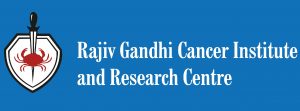Do you need a statistician as part of your research team? If yes! Then how many? One, two or a team? The question is simple however answer needs some information such as a type of study. For simple observational studies, you required only one statistician. For experimental studies, you required more than two statisticians. For example double-blind randomized phase-III clinical trial required three statisticians (Pocock 2004, Statistics in Medicine) i.e. Study (or Trial) Statistician, DSMB Statistician and Independent Statistician. Why? Randomization and interim analyses require “unbiased” analysis and interpretation of study data. Study statistician involves from the start of the study (conception) to the end of the study (analysis and report writing).
 The statistician may help to optimize study design, methodology, analysis and interpretation of results. The biostatistician works closely with the research team. An understanding of the principles on which measurement and summarization of data are based is essential to provide insights into the conduct of medical research. A statistician may add a fresh perspective in every step starting from writing research protocol (see Figure).
The statistician may help to optimize study design, methodology, analysis and interpretation of results. The biostatistician works closely with the research team. An understanding of the principles on which measurement and summarization of data are based is essential to provide insights into the conduct of medical research. A statistician may add a fresh perspective in every step starting from writing research protocol (see Figure).
S/he helps to redefine research question and objective by adding outcome variable. A hypothesis sentence requires both a theoretical basis in biology and statistical knowledge for the hypothesis. Statistician helps an investigator choosing a most efficient design by considering aim & objectives of the study. Sample size justification which is the most important component of a protocol and interim analysis plan (if any) can be given by a statistician. S/he also assists in endpoint selection including categorising following items:
- Single vs multiple endpoints (e.g. safety and efficacy)
- Continuous vs. Categorical endpoint
- Endpoint measurement (e.g. quantitative vs. QOL)
- Primary and secondary endpoints
- Patient benefit vs. biological/PK endpoint
Placing data and theory on an equal scientific footing and quantifying the influence of chance are the main responsibilities of a statistician. Managing missing (loss to follow-up) data, a power of the study, stratification and adjustments are some of the areas where a statistician can help investigator.
There is need to understand the importance of other factors that may influence the results of a study and their applicability, such as the number of subjects studied, the specific population, and the length of time that the subjects were monitored. Statistics is the art of summarizing; presenting and interpreting data so get a statistician for your research as early as possible!!!
Last modified: 21/11/2019







